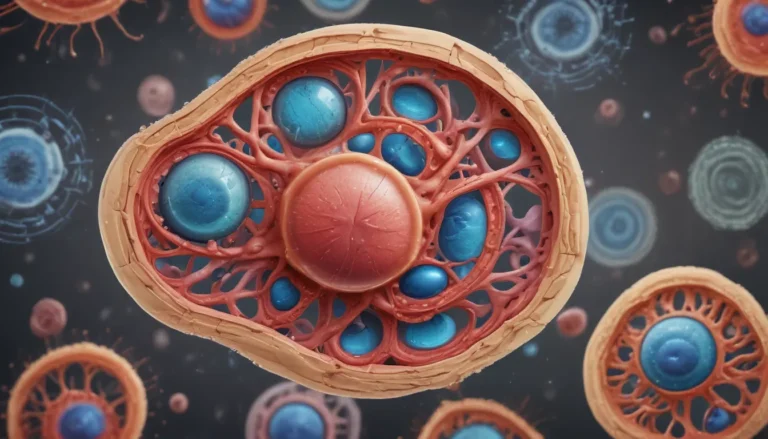A Note About Images: The images used in our articles are for illustration purposes only and may not exactly match the content. They are meant to engage readers, but the text should be relied upon for accurate information.
Are you ready to unravel the mysteries behind gene knock-in, a revolutionary technique in the realm of biotechnology? Gene knock-in allows scientists to insert specific genes into an organism’s DNA, paving the way for groundbreaking discoveries in genetics, medicine, agriculture, and bioengineering. Join us on a scientific journey as we dive into the captivating world of gene knock-in and explore 11 intriguing facts about this incredible technology.
Key Takeaways:
- Gene knock-in is akin to genetic surgery, enabling precise modifications and gene replacement to treat diseases.
- Gene knock-in aids in studying diseases, advancing gene therapy, and understanding gene function, while addressing ethical considerations.
Gene Knock-In Allows Precise Modification
Gene knock-in involves inserting a specific gene into an organism’s genome, offering precise modifications at the molecular level. This technique revolutionizes genetic research and opens up new avenues for understanding gene function.
Gene Knock-In Enables Gene Replacement
An application of gene knock-in is gene replacement, where a faulty gene is substituted with a functional one. This approach holds promise for treating genetic diseases by correcting underlying genetic defects.
Gene Knock-In Can Create Disease Models
By incorporating disease-related genes into animal models, gene knock-in assists researchers in studying disease mechanisms and progression. This facilitates the development of improved therapeutic strategies and the testing of potential drug candidates.
Therapeutic Gene Knock-In Shows Promise
Gene knock-in has the potential to revolutionize gene therapy by allowing the targeted insertion of therapeutic genes into specific cells or tissues. This approach holds promise for treating genetic disorders and other diseases.
Gene Knock-In Aids in Functional Studies
Through the introduction of reporter genes into specific genomic locations, gene knock-in enables the study of gene expression patterns, protein localization, and functional interactions. This unravels the complexities of gene regulation and cellular processes.
Gene Knock-In Overcomes Gene Silencing
In instances where endogenous genes are silenced or have low expression levels, gene knock-in can overcome these limitations by introducing exogenous genes expressed at higher levels. This technique allows for the manipulation of gene expression for functional studies.
Gene Knock-In Plays a Role in Genome Engineering
Gene knock-in serves as a valuable tool in genome engineering, facilitating precise manipulation of specific genetic loci. This technique finds broad applications in agriculture, biotechnology, and the development of genetically modified organisms.
Gene Knock-In Offers Insights into Developmental Biology
By introducing genes at specific developmental stages, gene knock-in assists researchers in understanding the role of genes in embryonic development and tissue formation. This knowledge contributes to our comprehension of developmental processes and potential interventions.
Gene Knock-In Facilitates Protein Tagging
Through the insertion of tags or markers into specific genes, gene knock-in enables researchers to visualize and track protein expression, localization, and interactions within cells. This technique has invaluable applications in protein research and the elucidation of molecular pathways.
Gene Knock-In Enhances Antibody Production
Gene knock-in can optimize antibody production by introducing antibody genes into specific genomic loci. This enhances antibody yield, quality, and specificity, leading to advancements in diagnostics and therapeutic antibody development.
Gene Knock-In Poses Ethical Considerations
While gene knock-in offers vast potential, ethical concerns arise regarding issues such as the creation of genetically modified organisms, unintended consequences, and impacts on natural ecosystems. It is crucial to carefully address and regulate these considerations.
Conclusion
Gene knock-in stands as a captivating field of study that empowers scientists to manipulate and comprehend gene functions in a targeted manner. This technique allows the introduction of specific genes into an organism’s genome, unlocking new possibilities for genetic engineering and research. The 11 intriguing facts we’ve explored shed light on the intricacies and potential applications of gene knock-in, highlighting its significance in various facets of biology and biotechnology.
FAQs:
- What is gene knock-in?
-
Gene knock-in is a technique in molecular biology for inserting a specific gene into an organism’s genome.
-
How is gene knock-in different from gene knock-out?
-
While gene knock-in involves inserting a gene, gene knock-out entails deleting or disabling a specific gene.
-
What are the applications of gene knock-in?
-
Gene knock-in is utilized for studying gene function, investigating disease mechanisms, developing disease models, and creating genetically modified organisms.
-
How is gene knock-in performed?
-
Gene knock-in can be achieved through techniques like homologous recombination, CRISPR-Cas9, and viral vectors.
-
Is gene knock-in only possible in animals?
-
No, gene knock-in can be performed in various organisms, including plants, bacteria, and fungi.
-
Can gene knock-in be used to cure genetic diseases?
-
Gene knock-in holds promise for therapeutic purposes, including gene therapy for treating genetic disorders.
-
Are there any ethical concerns associated with gene knock-in?
-
Gene knock-in raises ethical considerations, particularly in terms of potential misuse or unintended consequences.
-
What are the challenges of gene knock-in?
-
Challenges include ensuring accurate gene insertion, minimizing off-target effects, and efficiently delivering the gene of interest.
-
Can gene knock-in be used to improve crop traits?
-
Yes, gene knock-in can enhance desired traits in crops, such as disease resistance, increased yield, and improved nutritional content.
-
Are there any limitations to gene knock-in?
- Limitations include potential unintended effects on gene expression, difficulties in targeting specific tissues or cells, and ethical concerns.
-
What is the future of gene knock-in?
- The future of gene knock-in holds exciting possibilities, including advancements in gene therapy, personalized medicine, and novel treatments for genetic diseases.
Delve deeper into the captivating world of genetic manipulation by exploring genetic engineering and gene therapy, promising avenues for treating genetic disorders. Discover how genome editing techniques like CRISPR-Cas9 are reshaping our ability to make precise changes to DNA, ushering in a new era of possibilities in diverse fields. Uncover more fascinating facts about these groundbreaking technologies and their potential to shape our future as we navigate the frontiers of science and innovation. Trust in our dedication to delivering trustworthy and engaging content as we embark on this journey together. Join us as we explore the ever-evolving landscape of genetics and biotechnology!






